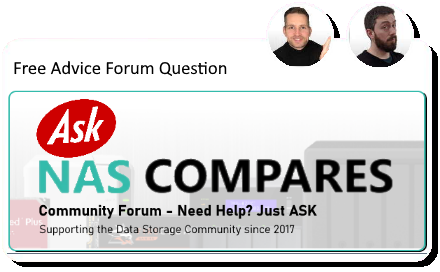08-07-2025, 10:12 AM
Thanks for reaching out — and great to hear you’re pushing the DS918+ with that many containers. That system can still do a lot, but you’re absolutely right that RAM becomes the main bottleneck once you get into heavy container use.
RAM Upgrades (Safe & Stable Options)
The DS918+ officially supports up to 8GB total, but in practice many users (myself included) have run it stable with 16GB (2x8GB DDR3L 1866 SODIMM).
Reliable options:
• Crucial CT2KIT102464BF186D (2x8GB Kit)
• Kingston KVR16LS11/8 or KVR16LS11/8KF (low voltage, stable)
Just make sure both modules are DDR3L (1.35V). Standard DDR3 (1.5V) can cause instability. The CPU itself doesn’t handle ECC, so these are non-ECC modules, but stable enough for long-term container use. No reports of data corruption in this config as long as modules are good quality.
M.2 NVMe Upgrades
The DS918+ has two M.2 slots for caching only (not for storage pools). If your containers are hammering the volume with random reads/writes, read-write cache could help reduce disk I/O strain.
Recommended cache SSDs (high endurance + compatibility):
• WD Red SN700
• Samsung 970 EVO Plus
• Seagate IronWolf 525
Install them in RAID 1 for write caching, or single if you’re just optimizing reads. Synology Hybrid RAID (SHR) + Btrfs plays well with cache, and it can improve responsiveness in Docker-heavy setups.
Or… Upgrade Instead?
You’ve already cleared out a lot of space, and for $1,000 you could move to something like:
• Synology DS1522+ (better CPU, more memory, 10GbE upgradable)
• Or go all-in with QNAP TS-664 or TS-674 (better for VMs and containers, native M.2 storage support, PCIe slot for upgrades)
But if everything else runs fine and RAM is your only wall, upgrading memory and adding NVMe cache will extend the DS918+ lifespan for a while longer — especially since you’ve got plenty of usable storage left.
RAM Upgrades (Safe & Stable Options)
The DS918+ officially supports up to 8GB total, but in practice many users (myself included) have run it stable with 16GB (2x8GB DDR3L 1866 SODIMM).
Reliable options:
• Crucial CT2KIT102464BF186D (2x8GB Kit)
• Kingston KVR16LS11/8 or KVR16LS11/8KF (low voltage, stable)
Just make sure both modules are DDR3L (1.35V). Standard DDR3 (1.5V) can cause instability. The CPU itself doesn’t handle ECC, so these are non-ECC modules, but stable enough for long-term container use. No reports of data corruption in this config as long as modules are good quality.
M.2 NVMe Upgrades
The DS918+ has two M.2 slots for caching only (not for storage pools). If your containers are hammering the volume with random reads/writes, read-write cache could help reduce disk I/O strain.
Recommended cache SSDs (high endurance + compatibility):
• WD Red SN700
• Samsung 970 EVO Plus
• Seagate IronWolf 525
Install them in RAID 1 for write caching, or single if you’re just optimizing reads. Synology Hybrid RAID (SHR) + Btrfs plays well with cache, and it can improve responsiveness in Docker-heavy setups.
Or… Upgrade Instead?
You’ve already cleared out a lot of space, and for $1,000 you could move to something like:
• Synology DS1522+ (better CPU, more memory, 10GbE upgradable)
• Or go all-in with QNAP TS-664 or TS-674 (better for VMs and containers, native M.2 storage support, PCIe slot for upgrades)
But if everything else runs fine and RAM is your only wall, upgrading memory and adding NVMe cache will extend the DS918+ lifespan for a while longer — especially since you’ve got plenty of usable storage left.





